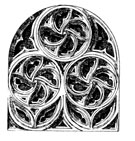
In Case You Didn’t Get to See The Passion of the Christ a Second Time
WHAT YOU MAY HAVE MISSED
Mel Gibson’s Passion is authentic Christian art. The movie has an extraordinarily rich aesthetic dimension, starting with the cast: the strong and virile body of Jim Caviezel (as Jesus), the penetrating eyes of Maia Morgenstern (as Mary), the imposing figure of Ivano Marescotti (as Pilate), and the stunningly beautiful Monica Bellucci (as Magdalen) — even the beguiling and androgynous Rosalinda Celantano (as Satan). And by anyone’s account these actors and actresses are remarkable for the outstanding quality of their acting.
Look also at how Gibson depicts the paradigms of human emotion: the grief and maternal loyalty on the face of Mary, the bewilderment of Malchus after Christ healed his ear, the devastation of Peter when he denies the Lord, the torment of Judas’s madness, the mocking of King Herod, the sublime innocence of Veronica, the sadism of many of the Roman soldiers, the rage of Simon of Cyrene, the insistent and relentless condemnations of the Jewish elders, and of course the ever-spiraling agony of Christ. To the Christian they illustrate the temptations, failures, and successes characteristic of the Christian struggle to live the life of faith — e.g., the pure love that moves frail Veronica to walk recklessly into the madness of Christ’s ascent to Calvary illustrates the pure love that should characterize all Christian discipleship; sadly most of us know we’re more characterized by the alternating pride and diffidence of Pontius Pilate.
There is also the stark beauty of the architectural and visual landscape: the imposing city walls of Jerusalem, the white windswept rock of Golgotha, the walled streets, stone bridges, turrets, overhangs, and passageways. Gibson’s choice of the lovely city of Matera (in the southern Basilicata region of Italy — in the instep of the Italian “boot”) for his venue was the choice of an aesthetically mature director. Moreover, the authentic set designs of the Praetorium, of the stone pavement where Christ was scourged, of Herod’s chamber, of Pilate’s palace, together with the authenticity of the clothing, of Jewish Passover rituals, of the original languages (notice that Christ speaks Aramaic to the Jews but Latin to Pilate), all show that Gibson did his homework.
Gibson’s aesthetic is stunningly effective: the eerie blue fog in the Garden of Gethsemane; the imposing figures filling the screen and threatening to topple out into our laps; the slow-motion, almost torturous kiss of Judas, the fast-motion mayhem that it precipitates; the tension that’s built as the Roman soldiers bend their reeds preparing to scourge; the quivering hands of the scourged Christ; the weight of Christ’s cross; the single rain drop that fills the screen after the death of Jesus and splashes dramatically to the ground as the harbinger of the violent earthquake; the repeated interest in the tools of Christ’s torture piled neatly beside the figures of the pietà; the light on the ceiling of the tomb dispelling the darkness as the stone rolls away; the deflating shroud on the burial slab; the pristine flesh of the risen Christ; and so on. All but the most biased viewer must concede Gibson’s enormous visual and aesthetic success.
Some have criticized the violence, particularly the scourging, as being excessive, as going beyond what’s justified in the biblical texts. While all four Gospels mention the scourging, they do not elaborate on its brutality. A reading of the biblical narrative therefore might lead one to disagree with Gibson’s portrayal. But Gibson’s is certainly within the fair range of interpretations. Other biblical texts provide warrants for his interpretation: Wisdom 2:19, for example, referring to the “just one,” says: “With revilement and torture let us put him to the test that we may have proof of his gentleness and try his patience.” And the Suffering Servant passages in Isaiah say: “Many were astonished at him — his appearance was so marred, beyond human semblance, and his form beyond that of the sons of men…. He was pierced for our offenses, crushed for our sins, upon him was the chastisement that makes us whole, by his stripes we were healed” (52:14; 53:5).
You May Also Enjoy
Tolkien knew very well that God allowed him to understand the reason for the bloodletting of modernity: Man had fallen away from the Creator.
Hollywood's standard view of sexuality frequently works against a film’s best intentions. Is all the bed-hopping supposed to have any real significance?
What evil an artist can legitimately and accurately depict depends on the altitude from which the artist sees that evil.

